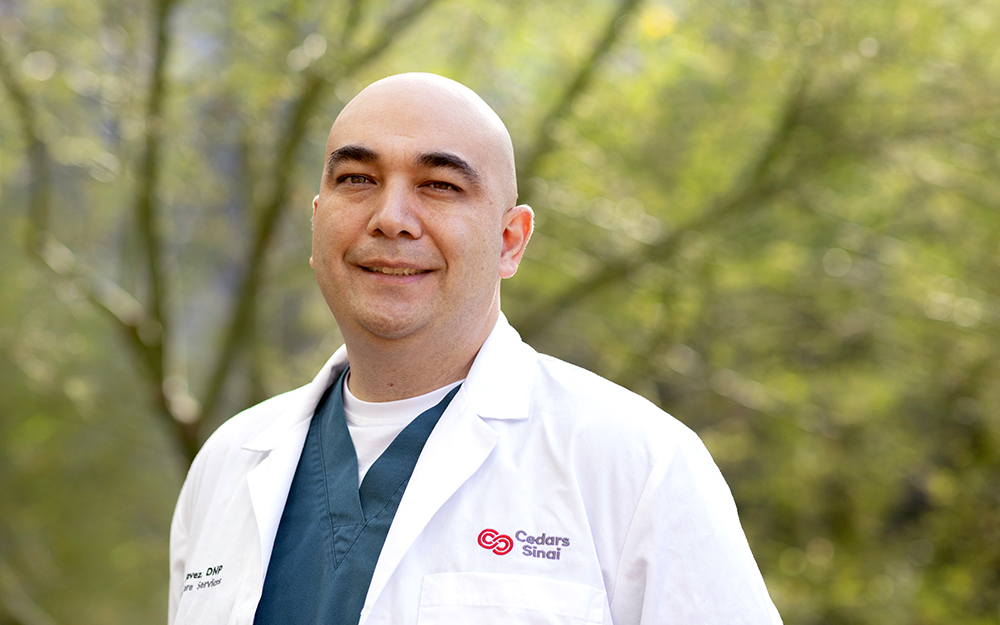The PPE shortages of the COVID-19 pandemic contributed to a record number of infections among frontline healthcare workers. But a pilot program led by a team of ICU nurses at Cedars-Sinai is changing the way the providers use PPE. The technique is remarkably simple and can help nurses save time and conserve resources when caring for highly infectious patients.
Jose Chavez, a critical care nurse in Cedars-Sinai’s ICU, remembers when his facility started to run low on supplies.
“We started hearing that facilities were running out of N95 respirators, gowns and gloves and that manufacturers couldn’t keep up,” he said. “There were no precedents. We couldn’t just see what had been done before and do the same thing.”
The nurses weren’t even sure which equipment to use in the early days of the pandemic. “People weren’t totally sure which protective equipment was optimal,” he said.
The hospital created a Special Pathogens Response Team, one of the first in the nation, which implemented infection control techniques to protect nurses from the virus.
“This was very effective, but it created a new dilemma in the ICU,” Jose explained.
The problem was that ICU patients needed around-the-clock care, but nurses had to put on fresh PPE every time they entered the room.
“I’d put on a clean gown, gloves, face shield and N95 respirator,” Jose recalled. “I would go in, check on my patient and complete my task.”
As soon as he was finished checking up on the patient, he would leave the room and immediately discard his PPE.
“Then, I would suddenly hear beeping from inside the room that indicated one of the medications unexpectedly had to be checked or adjusted,” he said.
He would then have to put on another round of PPE before checking on the next patient.
But that wasn’t the only problem. Many of the drugs used in the ICU need to be monitored by a second provider to make sure they are being administered at the right time and at the proper dose. This only contributed to the PPE shortage.
If an ICU patient needs two different drugs around the same time, two nurses would have to go through four sets of PPE within just a couple of minutes. This strategy ultimately proved unsustainable.
“With every nurse doing this on the floor many times each day, you can imagine how much PPE we were going through,” Jose explained.
But leaving providers vulnerable to infection wasn’t an option. “If we got sick, we wouldn’t be able to help anybody, so it was very important to avoid getting infected,” Jose added.
The hospital soon faced a dilemma: What would happen if the ICU ran out of PPE and nurses got exposed to COVID-19?
Jose and his colleagues came up with a solution that keeps nurses safe from infection without consuming an inordinate amount of PPE.
The staff moved each patient’s IV pump outside of their room, so the nurse could monitor and adjust their medication without entering the room. Now they don’t have to change in and out of PPE every time they check up on a patient.
“It’s not as easy as just moving the equipment out of the patient’s room,” Jose explained. “There are many serious considerations when you change something that is always done the same way. Our utmost priority was the wellbeing of our patients.”
They weren’t sure if the medications would flow through the longer tubes to reach the patient in time. The facility consulted with a team of experts, including doctors, infection control specialists, and regulators, to find a feasible solution.
In the end, they only moved the IVs a few feet, but it made a world of difference. It could become the new standard for nurses treating highly infectious ICU patients to help conserve PPE.




